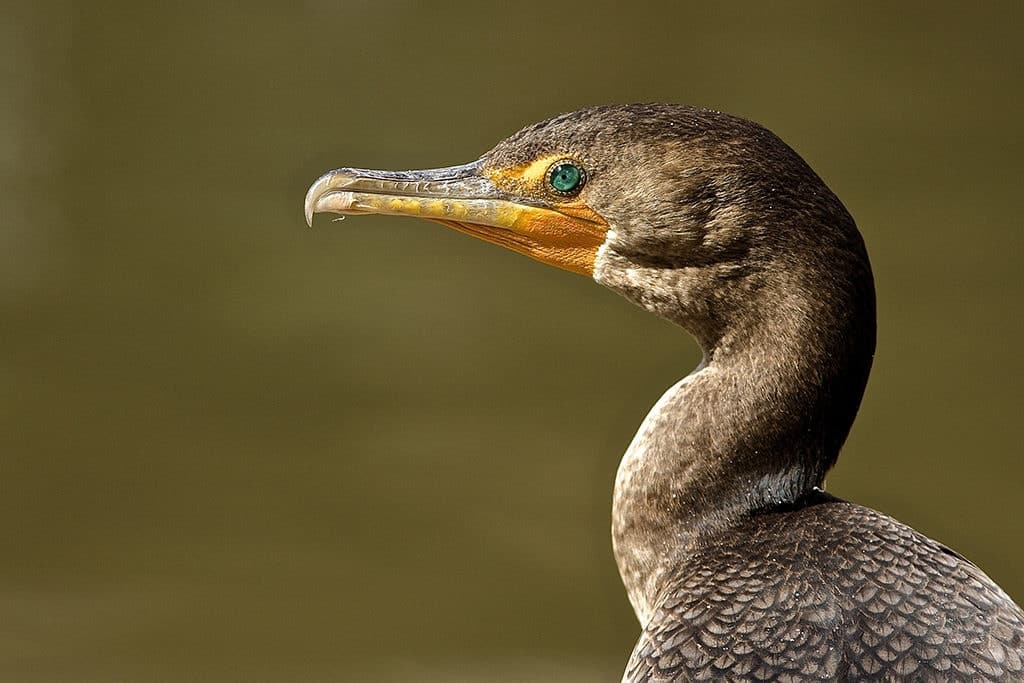
The collapse of the entire colony went far beyond what was allowed under the Corps permits and puts the entire western population of Double Crested Cormorants at risk. Yet, the US Army Corps has applied for permits to continue destroying cormorant nests on East Sand Island if the birds return in 2018 and plans to modify their habitat to limit nesting in the future.
The agencies claim that the killing is necessary to protect federally listed salmon. However, killing of cormorants is nothing more than a diversion from the real cause of salmon decline, the federal hydropower system. In fact, US Fish and Wildlife Service Fish Biologists produced a secret report which concluded that killing cormorants at East Sand Island will do nothing to help recover salmon. Five times in the last twenty years, Federal Courts have rejected US Army Corps Columbia River Salmon Plans due to the fact that they have inadequately addressed the impacts from the dams.
It is time to stop scapegoating cormorants on East Sand Island and address the real cause of salmon declines.
Urge federal agencies and local leaders to stop the scapegoating of cormorants on East Sand Island.
Write to the US Army Corps and US Fish and Wildlife Service today and tell them that is time stop scapegoating cormorants and address the primary cause of salmon declines: the federal hydropower system.
Take Action
Background
East Sand Island was once home to the largest breeding colony of Double-crested Cormorants in the world. More than 28,000 Double-crested Cormorants, representing 40% of the entire Double-crested Cormorant population in the Western United States, nest and raise their young on this small island near the mouth of the Columbia River. Sadly, this amazing bird colony has suffered relentless persecution at the hands of Federal Agencies.
In 2015, the US army Corps of Engineers developed a plan to reduce the size of the East Sand Island cormorant colony through a combination of boat-based shooting of cormorants foraging in the estuary, shooting of adult birds on their active nests on East Sand Island and destruction of nests on East Sand Island. The plan called for shooting nearly 11,000 cormorants and destroying more than 26,000 nests over a four period.
The Corps claims that killing cormorants is necessary to protect federally listed salmon and steelhead in the Columbia River. The facts tell and entirely different story. Cormorants and salmon have coexisted since time immemorial. The real cause of salmon declines is the Federal Hydropower System (dams) on the Columbia and Snake Rivers. However, rather than take the necessary steps to modify the hydropower system, specifically increasing water spills the Columbia River Dams during salmon migration and removing four obsolete Snake River Dams, the federal agencies have instead chosen to scapegoat fish eating birds.
Sadly, the US Fish and Wildlife Service, the agency charged with protecting cormorants, instead issued permits in 2015, 2016 and 2017 allowing the Corps to kill thousands of cormorants and destroy thousands of cormorant nests. The US Fish and Wildlife Service issued these permits despite the fact that their own fish biologists produced a report that determined that killing cormorants would do nothing to help recover salmon. This report was hidden from the public and only released after Bird Alliance of Oregon sought a court order to make it public. Even the Corps own lead cormorant researcher questioned the need to kill cormorants and accused the Corps of misrepresenting the research.
The killing has been relentless. In 2015, the federal agencies shot 2,346 birds and destroyed 5,089 nests. In 2016, the federal agencies shot 2,982 birds and destroyed 1,092 nests. In June of 2016, after weeks of relentless shooting and just days after federal agents began entering the colony and destroying nests, the entire colony collapsed: 16,000 cormorants abandoned their active nests in a single day and every nest in the colony failed. Despite this unprecedented event, the Corps resumed shooting cormorants in the fall of 2016, and the US Fish and Wildlife Service issues permits to resume killing cormorants and destroying nests in 2017. In 2017, in the face of continued shooting, only a few hundred cormorants returned to East Sand Island, a tiny fraction of the more than 28,000 that nested there as recently as 2014.
The agencies have created a worst case scenario. They have caused the complete collapse of the largest Double-crested Cormorant Colony in the world and put the entire western population of Double-crested Cormorants at risk. Tens of thousands of Double-crested Cormorants moved further up the Columbia River during 2016 and 2017 where scientists believe that would consume more salmon than if they had stayed at East Sand Island. The primary cause of salmon declines, the federal hydropower system, remains unaddressed.
Over the past twenty years, the US Army Corps has been sued five times and lost five times in federal court for its failure to adequately address salmon declines on the Columbia River caused by the Federal Hydropower System. In the most recent court loss, Federal District Judge Michael Simon wrote “For more than 20 years… the federal agencies have ignored the admonishments (of federal courts) and continued to focus essentially on the same approach…These efforts have already cost billions of dollars, yet they are failing. Many populations of the listed species continue to be in a perilous state.” (Oregonian Article)
The US Fish and Wildlife Service is currently reviewing a permit application from the US Army Corps of Engineers that would allow them to destroy up to 500 Double-crested Cormorant Nests on East Sand Island during the 2018 nesting season. The Fish and Wildlife Service is likely to approve this permit despite the fact further harassment of the cormorants will put the colony at risk of continued collapse, put the entire western population of Double-crested Cormorants at risk, and do nothing to help listed salmon.



